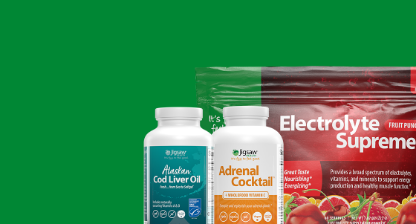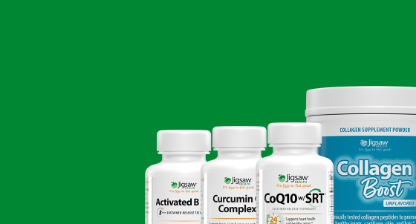What are phytonutrients?
Source: United States Department of Agriculture
Phytonutrient FAQs
- What are phytonutrients and where are they found?
- What are the major classes of phytonutrients?
- How do phytonutrients protect against diseases?
- What is the evidence that fruit and vegetable consumption protects human health?
- Are Americans eating enough fruits and vegetables?
- What is the present state of phytonutrient research?
1. What are phytonutrients and where are they found?
The term "phyto" originated from a Greek word meaning plant. Phytonutrients are certain organic components of plants, and these components are thought to promote human health. Fruits, vegetables, grains, legumes, nuts and teas are rich sources of phytonutrients. Unlike the traditional nutrients (protein, fat, vitamins, minerals), phytonutrients are not "essential" for life, so some people prefer the term "phytochemical".
2. What are the Major Classes of Phytonutrients?
Some of the common classes of phytonutrients include:
- Carotenoids
- Flavonoids (Polyphenols) including Isoflavones (Phytoestrogens)
- Inositol Phosphates (Phytates)
- Lignans (Phytoestrogens)
- Isothiocyanates and Indoles
- Phenols and Cyclic Compounds
- Saponins
- Sulfides and Thiols
- Terpenes
About Carotenoids
Of all the phytonutrients, we probably know the most about carotenoids, the red, orange and yellow pigments in fruits and vegetables. The carotenoids most commonly found in vegetables (and in plasma) are listed below along with common sources of these compounds. Fruits and vegetables that are high in carotenoids appear to protect humans against certain cancers, heart disease and age related macular degeneration.
| Carotenoid | Common Food Source |
| alpha-carotene | carrots |
| beta-carotene | leafy green and yellow vegetables (eg broccoli, sweet potato, pumpkin, carrots) |
| beta-cryptoxanthin | citrus, peaches, apricots |
| lutein | leafy greens such as kale, spinach, turnip greens |
| lycopene | tomato products, pink grapefruit, watermelon, guava |
| zeaxanthin | green vegetables, eggs, citrus |
For a more detailed discussion of carotenoid content of fruits and vegetables see Chug-Ahuja et al, Journal of the American Dietetic Association, 1993;93:318 and Mangels et al. Journal of the American Dietetic Association, 1993;93:284-296. For carotenoid values of specific foods see the USDA-NCC Carotenoid Database for U.S. Foods on the website of the Nutrient Database Laboratory.
About Polyphenols
Polyphenolic compounds are natural components of a wide variety of plants; they are also known as secondary plant metabolites. Food sources rich in polyphenols include onion, apple, tea, red wine, red grapes, grape juice, strawberries, raspberries, blueberries, cranberries, and certain nuts. The average polyphenol / flavonoid intake in the U.S. has not been determined with precision, in large part, because there is presently no U.S. national food database for these compounds. (USDA scientists and their colleagues are in the process of developing a database for foods rich in polyphenols.) It has been estimated that in the Dutch diet a subset of flavonoids (flavonols and flavones) provide 23 mg per day. Earlier estimates of dietary intake that approximated 650 mg per day (Kuhnau, World Review of Nutrition and Dietetics, 1976;24:117) are generally thought to be too high as the estimate was based on data that were generated by "old" (less specific) methodology. Scientists at the Food Composition Laboratory, Beltsville Human Nutrition Research Center are currently developing new methodology for the accurate measurement of polyphenols in foods.
Polyphenols can be classified as non-flavonoids and flavonoids. The flavonoids quercetin and catechins are the most extensively studied polyphenols relative to absorption and metabolism.
| Nonflavonoids | Sources |
| ellagic acid | strawberries, blueberries, raspberries |
| coumarins |
| Flavonoids | Sources |
| anthocyanins | fruits |
| catechins | tea, wine |
| flavanones | citrus |
| flavones | fruits and vegetables |
| flavonols | fruits, vegetables, tea, wine |
| isoflavones | soybeans |
3. How do phytonutrients protect against disease?
The following are commonly proposed mechanisms by which phytonutrients may protect human health. More research is needed to firmly establish the mechanisms of action of the various phytochemicals.
Phytonutrients may:
- serve as antioxidants
- enhance immune response
- enhance cell-to-cell communication
- alter estrogen metabolism
- convert to vitamin A (beta-carotene is metabolized to vitamin A)
- cause cancer cells to die (apoptosis)
- repair DNA damage caused by smoking and other toxic exposures
- detoxify carcinogens through the activation of the cytocrome P450 and Phase II enzyme systems
4. What is the evidence that fruit and vegetable consumption protects human health?
Evidence that fruit and vegetable consumption protects human health is accumulating from large population (epidemiological) studies, human feeding studies, and cell culture studies. Listed below are a few selected population studies from the literature linking fruit and vegetable consumption to health. For an excellent review concerning vegetables, fruit and cancer prevention, see Steinmetz and Potter, Journal of the American Dietetic Association 1996;96:1027.
Evidence that Carotenoids are Protective
Fruit and vegetable consumption has been linked to decreased risk of stroke -- both hemorrhagic and ischemic stroke. Each increment of three daily servings of fruits and vegetables equated to a 22% decrease in risk of stroke, including transient ischemic attack (Gillman et al. Journal of the American Medical Association. 1995;273;1113).
Elderly men whose intake of dark green and deep yellow vegetable put them in the highest quartile for consumption of these vegetables had about a 46% decrease in risk of heart disease relative to men who ranked in the lowest quartile. Men in the highest quintile had about a 70% lower risk of cancer than did their counterparts in the lowest quintile. The differences in vegetable consumption between high and low intake rankings was not striking. Men in the highest quartile or quintile consumed more than two (>2.05 and >2.2) servings of dark green or deep yellow vegetable a day; those in the lowest quartile or quintile consumed less than one serving daily (
Consumption of tomato products has been linked to decreased risk of prostate cancer. Men in the highest quintile for consumption of tomato products (10 or more servings a week) had about a 35% decrease in risk of prostate cancer compared to counterparts whose consumption put them in the lowest quintile (1.5 or fewer servings of tomato products a week) (Giovannucci et al. Journal of the National Cancer Institute 1995;87:1767).
People in the highest quintile for consumption of spinach or collard greens, plants high in the carotenoid lutein, had a 46% decrease in risk of age-related macular degeneration compared to those in the lowest quintile who consumed these vegetables less than once per month (Seddon et al. Journal of the American Medical Association. 1994;272:1413).
Evidence that Polyphenols are Protective
Flavonoid consumption has been linked to lower risk of heart disease in some, but not all, studies. Elderly Dutch men in the highest tertile of flavonoid intake had a risk of heart disease that was about 58% lower than that of counterparts in the lowest tertile of intake. Those in the lowest tertile consumed 19 mg or less of flavonoids per day, whereas those in the highest tertile consumed approximately 30 mg per day or more (Hertog et al. Lancet. 1993;342:1007). Similarly, Finnish subjects with the highest quartile of flavonoid intake had a risk of mortality from heart disease that was about 27% (for women) and 33% (form men) lower than that of those in the lowest quartile (Knekt et al. British Medical Journal. 1996;312:478).
However, in other studies the protective effect of flavonoids could not be confirmed. For Welch men, flavonol intake did not predict a lower rate of ischemic heart disease and was weakly positively associated with ischemic heart disease mortality (Hertog et al. American Journal of Clinical Nutrition. 1997;65:1489). For U.S. male health professionals, data did not support a strong link between intake of flavonoids and coronary heart disease (Rimm et al. Annals of Internal Medicine. 1996;125:384).
5. Are Americans Eating Enough Fruits and Vegetables?
An excellent source of information on fruit, vegetable and grain intake of Americans is USDA's 1994/96 Continuing Survey of Food Intakes by Individuals conducted by the Food Surveys Research Group, Beltsville Human Nutrition Research Center. The following information comes from that survey.
Vegetable Intake
On average, Americans consume 3.3 servings of vegetables a day. However, dark green vegetables and deep yellow vegetables each represent only 0.2 daily servings.
On any given day, about 49% of the population consumes at least the minimum number of servings of vegetables recommended (3 servings per day); 41% consume the number of servings recommended based on caloric intake (3 servings per day for those consuming less than 2200 calories, 4 servings per day for those consuming 2200-2800 calories, 5 servings per day for those consuming 2800 calories or more). About 10% of the population consumes less than one serving of vegetable per day.
About Fruit Intake
On any given day about 29% of the population consumes at least the minimum number of servings of fruit recommended (2 servings per day); 24% consume the number of servings recommended based on caloric intake (2 servings per day for those consuming less than 2200 calories, 3 for those consuming 2800 calories, 4 for those consuming 2800 calories or more). About 48% consume less than one serving of fruit a day.
6. What is the Present Status of the Art of Phytonutrients Research?
Population studies have linked fruit and vegetable consumption with lowering the risk for chronic diseases including specific cancers and heart disease. However, media and consumer interest in phytonutrients and functional foods is far ahead of established proof that documents the health benefits of these foods or food components for humans. Phytonutrients research is experiencing remarkable growth. Hopefully, more specific information on phytonutrient consumption and human health will be forthcoming in the near future. For now, it appears that an effective strategy for reducing risk of cancer and heart disease is to increase consumption of phytonutrient-rich foods including fruits, vegetables, grains and teas.
Source:
United States Department of Agriculture; Agricultural Research Service
http://www.ars.usda.gov/Aboutus/docs.htm?docid=4142

















